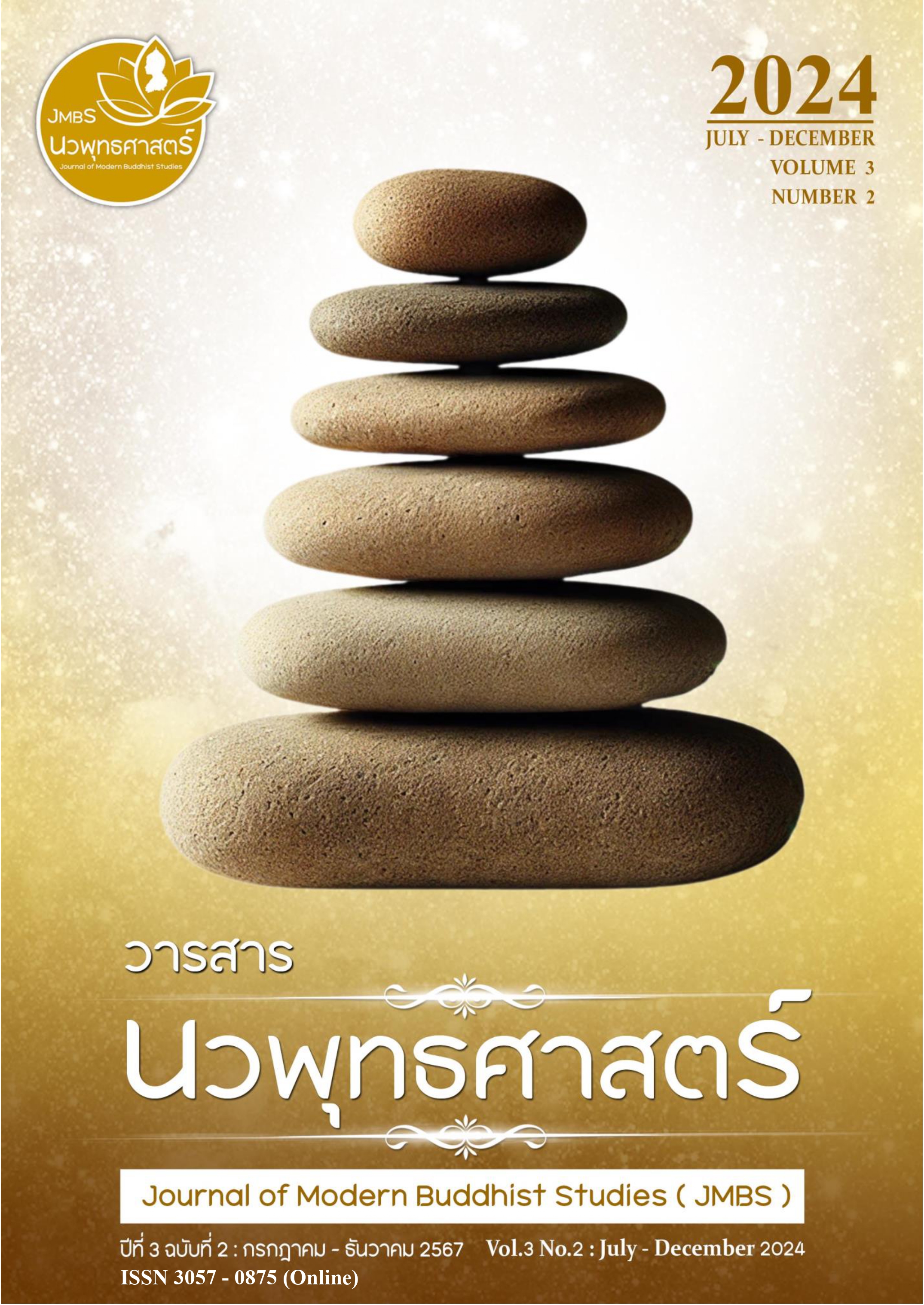Stupa, a symbol of Buddhism
Keywords:
Pattern, Stupa, Buddhist symbolAbstract
This article studies the stupa in Buddhism as a religious and cultural symbol that reflects faith and beliefs that have been passed down since ancient times. In the Sukhothai period, the words “stupa” and “chedi” were used together, referring to buildings that enshrine the relics of important people. King Yot Chiang Rai built a stupa to enshrine the relics of King Tilokarat. In India, the stupa began as a mound containing relics and developed into an important religious site. He built the Great Stupa of Nalanda. King Ashoka the Great promoted the construction of stupas to worship the Buddha. He built the Sanchi Stupa and various stone thrones. The spread of Buddhism caused the stupa style to be influenced by Indian, Sri Lankan, and Burmese art, until it became a local art in Thailand from the Dvaravati, Sukhothai, Ayutthaya, and Rattanakosin periods. It is valuable historical and artistic evidence that helps reveal the history of Thai culture and the Southeast Asian region, which has a mixture of arts and diverse beliefs.
References
สมเด็จพระเจ้าบรมวงศ์เธอ กรมพระยาดำรงราชานุภาพ (2545). ตำนานพระพุทธเจดีย์. กรุงเทพมหานคร: สำนักพิมพ์มติชน.
พระครูโสภณปริยัติสุธี (ศรีบรรดร ธีรธมฺโม) (2550). ทฤษฎีรัฐศาสตร์ในพระไตรปิฎก. พิมพ์ครั้งที่ 2. พะเยา: โรงพิมพ์เจริญอักษร.
พระมหาสมจินต์ สมฺมาปญฺโ (2567), “เจดีย์ในพระพุทธศาสนา”. บทความวิชาการ. [ออนไลน์]. แหล่งที่มา: https://www.mcu.ac.th/article/detail/503.
สันติ เล็กสุขุม (2567). “เจดีย์ทรงระฆัง-ทรงพุ่มข้าวบิณฑ์-ทรงปรางค์ มาจากไหน อย่างไร”. วารสารศิลปวัฒนธรรม, [ออนไลน์]. แหล่งที่มา: https://shorturl.asia/imHeC.
หม่อมเจ้าสุภัทรดิศ ดิศกุล (2522). ศิลปะอินเดีย. นครปฐม: แผนกบริการกลาง มหาวิทยาลัยศิลปากร.
ม.จ.สุภัทรดิศ ดิศกุล (2535). ประวัติศาสตร์เอเชียอาคเนย์ถึง พ.ศ. 2000. กรุงเทพมหานคร: บริษัท
รุ่งแสงการพิมพ์ จำกัด.
สมชาย สิริประเสริฐศิลป์ (2529). การศึกษารูปแบบสถูปเจดีย์ในสมัยรัชกาลที่ 4. สาขาวิชาโบราณคดีสมัยประวัติศาสตร์. บัณฑิตวิทยาลัย: มหาวิทยาลัยศิลปากร.
ศักดิ์ชัย สายสิงห์ (2556). พุทธศิลป์สมัยรัตนโกสินทร์ พัฒนาการของงานช่างและแนวคิดที่ปรับเปลี่ยน. กรุงเทพมหานคร: เมืองโบราณ.
ศักดิ์ชัย สายสิงห์ (2560). เจดีย์ในประเทศไทย: รูปแบบ พัฒนาการและพลังศรัทธา. นนทบุรี: สำนักพิมพ์เมืองโบราณ.
น. ณ ปากนํ้า (2529) ความเป็นมาของสถูปเจดีย์ในสยามประเทศ. กรุงเทพมหานคร: ศูนย์การพิมพ์พลชัย.
นิดดา หงส์วิวัฒน์ และคณะ (2555). พระพุทธรูปและเทวรูป: ศิลปะทวารวดี ศิลปะทักษิณ และศิลปะร่วมแบบเขมร. กรุงเทพมหานคร: มติชน.
ธนธร กิตติกานต์ (2557). มหาธาตุ. กรุงเทพมหานคร: มติชน.
Adrian Snodgrass (2537). The Symbolism of the Stupa. แปลโดย ภัทรพร สิริกาญจน และคณะ. สัญลักษณ์แห่งพระสถูป. กรุงเทพมหานคร: โรงพิมพ์มหาวิทยาลัยธรรมศาสตร์.
ธนธร กิตติกานต์ (2557). มหาธาตุ. กรุงเทพมหานคร: มติชน.
Benjamin Rowland. The Art and Architecture of India Buddhist. Hindu and Jain Methuen. penguin Books L.td., 1970.
Downloads
Published
How to Cite
Issue
Section
License
Copyright (c) 2024 Journal of Modern Buddhist Studies

This work is licensed under a Creative Commons Attribution-NonCommercial-NoDerivatives 4.0 International License.






